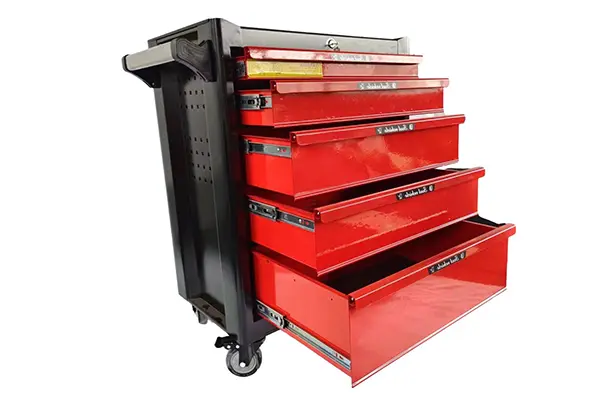The design of portable toolboxes plays a significant role in noise generation during transportation and usage. Several factors related to the design contribute to how much noise a toolbox produces:
1. Material of the Tool Box:
- Metal Tool Boxes: These tend to generate more noise compared to those made from plastic or composite materials. Metal surfaces can create a clanging sound when tools shift or when the box is moved.
- Plastic or Composite Toolboxes: These materials tend to absorb sound better than metal, reducing noise levels. They also often have a slightly flexible nature that can cushion tools, preventing them from hitting hard surfaces and making noise.
2. Internal Organization:
- Dividers and Compartments: Toolboxes with well-designed internal dividers or compartments can significantly reduce noise. These features keep tools in place, preventing them from moving around and colliding with each other.
- Foam Padding or Liners: Some tool boxes include foam padding or liners within compartments or on the base, which absorb shock and vibrations, thus minimizing noise. These materials help keep tools from rattling against the walls of the box.
3. Closure Mechanisms:
- Latch Design: The design and quality of the latch mechanism can impact noise. Sturdy latches with tight fits can reduce rattling. Conversely, loose or poorly fitted latches can create additional noise during transportation as they may move or shake.
- Seal Design: Tool boxes with rubber seals or gaskets around the edges of the lid not only help with water and dust resistance but also dampen noise by providing a tight, cushioned closure.
4. Tool Arrangement:
- Customized Tool Storage: Tool boxes that allow for custom arrangements or have slots for specific tools can reduce noise by securing each tool in place. Tools that are snugly fitted are less likely to move and produce noise.
- Modular Inserts: Some portable tool boxes come with modular inserts that can be adjusted to fit various tools snugly, preventing them from shifting during transport and thus reducing noise.
5. Handle and Wheels:
- Handle Design: Handles that are securely attached and have ergonomic designs with padding can reduce noise. Loose handles may rattle against the body of the toolbox when moved.
- Wheel Design: For toolboxes that come with wheels, the type of wheels and their attachment to the box can influence noise levels. Rubber or softer material wheels produce less noise compared to hard plastic wheels, especially on rough surfaces.
6. Structural Integrity:
- Sturdy Construction: A well-constructed toolbox with reinforced corners and sides is less likely to flex and create noise during transport. Weak or thin materials can bend and flex, causing creaks and additional noise.
7. Size and Weight Distribution:
- Balanced Weight Distribution: Tool boxes designed to distribute weight evenly are less likely to tip over or shift during movement, reducing noise. An unevenly weighted toolbox can be noisier as it causes tools to slide and bang against the sides.
In summary, noise generation in portable toolboxes during transportation and usage can be minimized through thoughtful design that includes sound-dampening materials, effective internal organization, secure closure mechanisms, and ergonomic features.
Post time: 08-26-2024




